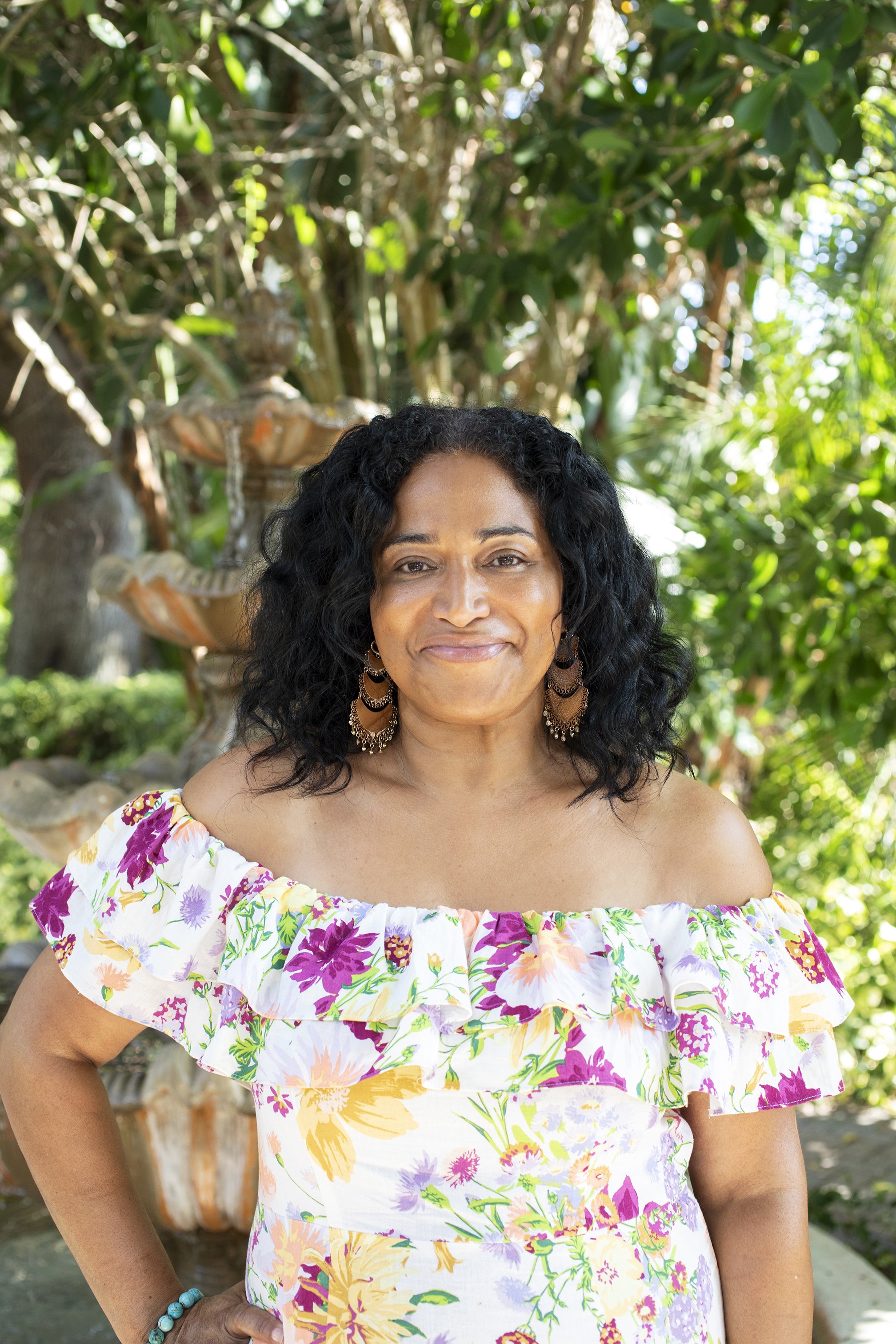The Right to Swim

Vivia Barron’s The Right to Swim at the Dr. Carter G. Woodson African Amercian Museum is an exhibition of paintings showing a tropical utopia. Intended to combat the history of segregation in Florida, Barron’s beachscapes show what life is like going to the beach without fear. The utopic scenes show beach-goers strolling alongside the coastline, lounging under umbrellas, and playing with balloons and beach balls.
Barron was born in Jamaica, and was a personal chef and restauranteur for twenty-five years. She was inspired to start painting when she discovered the disturbing history of segregation surrounding the State of Florida, particularly its beaches. She collects vintage photographs and postcards, but was horrified when she saw some of the segregation-era postcards from Florida. They’re explicitly racist both in their language and their depictions, and some encourage violence. “I couldn’t believe it,” says Barron, “This is my adopted country. I never saw anything like that in Jamaica because I’m not a minority—we had our own pain and suffering and struggle—but images like that would just not be tolerated.”
She soon found out that there was a time when Florida’s beaches were segregated. “I started to do my research, and it led me to the times of segregation and the right not to swim in the State of Florida. We live two miles, five miles, ten miles away from the beach, but we were not allowed to go to the beach.”
Barron taught herself how to paint in order to respond to what she’d learned. “I needed to change those images,” she says, “I had to do something. It grabbed my soul is the only way I can explain it.” Instead of showing people being degraded or suffering, Barron decided the people in her paintings would be shown having fun at the beach the way she remembers it growing up. “I decided to not show any images that are derogatory of us. That’s not what this is about. I took the mainstream images from the postcards and I put us in it.”
Most of the beachscapes include only a sliver of sky because Barron paints the horizon line near the top of the composition. With all of the action taking place on the sand, the paintings show groups of people with slender arms and legs walking and laying out. The groups of figures are interspersed throughout the composition in an equidistant manner that mimics a grid. They’re presented with an almost isometric perspective that makes the figures appear flat and presented on a plane of space that recedes from the bottom of the composition to the top.
Barron’s brushstroke is impressionistic, and her polychromatic color palette is bright and saturated. A single stroke of paint can serve as a person, a cloud, or a wave in the gulf. Her figures are paired-down, and this puts the emphasis on what they’re doing and where they’re doing it.
One painting titled, Beach and Balloons #1 (2022), is organized in a balanced, soothing way. It depicts over a dozen groups of people walking on the beach in various arrangements of height and size. What’s soothing about its organization is that some groups are arranged according to height, age, or familial role. One group of three has a child walking hand-in-hand between her parents. Another group of five includes a dog, who’s the shortest, and four children walking in order of their height with each a head above the next. A group of three depicted further away, toward the water, shows two of them tethered to red balloons floating above them, with the middle person’s body depicted with just a single stroke of red paint. There’s a compositional balance to the painting that signals the inherent perfection of nature.
Some of the paintings are inspired by beaches in Saint Petersburg, and are titled according to their locations. Some even contain actual sand from those beaches intermixed with the paint. Spa Beach appears several times in Barron’s paintings because its integration was an important milestone toward equality. Lassing Park also appears several times in the paintings because it’s where Barron first recognized the lingering segregation of her own neighborhood. “Ten years ago, when I first got to St. Pete, I lived right across the street from Lassing Park. I was in shock because when I went there nobody looked like me, but within less than a mile the entire community looked like me.”
Barron wants to represent the public spaces in her community in ways that look welcoming to everyone, but especially those who don’t currently feel welcome in those spaces. “This will, perhaps, help heal some of those wounds. Because there are wounds there, and there are wounds that continue to have salt poured in them still today,” she says. “What was really important for me was to paint us at the beach for us. I wanted to say that these places are for us as well as for everybody else. Remember that it’s here. Welcome.”
